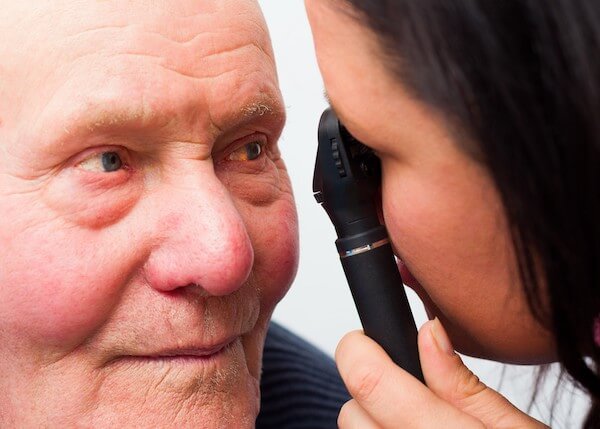Posted by: Kentucky Eye Institute in Glaucoma

Did you know around three million Americans suffer from glaucoma issues? If you would like to learn about types of glaucoma, keep reading. Learning about the different causes of glaucoma can actually improve your eyesight. In this guide, we’ll tell you about the different glaucoma treatment options available to try.
You can also begin monitoring for any glaucoma symptoms. Check out the tips below.
Why Would You Use Eye Drops?
Various kinds of glaucoma will have specific treatment methods. You can try these treatment methods to prevent further damage to your optic nerve. Your doctor might even recommend a particular combination of methods.
When you meet with your eye doctor, they will review individualized treatment options.
For example, some people will enjoy a treatment from eye drops. You can use eye drops daily and reduce IOP. The eye drops can reduce the fluid production rate or help boost the outflow of eye fluid.
The type of eyedrops recommended by your doctor will depend on an assessment of your needs.
If the eye drops don’t help with the eye pressure, your doctor will prescribe an oral medication. Usually, people will get prescribed a carbonic anhydrase inhibitor.
Don’t stop taking eye drops or other drugs until you speak to your ophthalmologist.
Prostaglandins
Some prescription eye drops will include prostaglandins.
Prostaglandins will help increase the fluid outflow from your eye and lower eye pressure. Medicines include latanoprost, travoprost, tafluprost, bimatoprost, and latanoprostene bunod.
Potential side effects involve mild redness or stinging in your eye. You might also notice your iris darkens or the pigment of your eyelid skin darkens. Some people even report blurry vision.
If you get prescribed this drug, you will only use it once daily.
Try Beta Blockers
A beta blocker will sometimes get prescribed. Beta-blockers will lower the amount of fluid production in your eye and reduce eye pressure. Some examples include timolol and betaxolol.
Side effects include a slow heart rate, lowered blood pressure, difficulty breathing, fatigue, or impotence. People will usually only use this twice or once daily.
Alpha-Adrenergic Agonists
An alpha-adrenergic agonist will lower the amount of aqueous humor and increase the outflow of fluid in your eyes. Some side effects include an irregular heart rate, higher blood pressure, itchy eyes, or fatigue.
Carbonic Anhydrase Inhibitors
Look into carbonic anhydrase inhibitors. The medicine will reduce the amount of production of fluid in your eyes. Watch out for metallic taste and tingling for side effects.
The drug will get prescribed to be used twice daily. Sometimes, it will get prescribed to be used three times a day.
Rho Kinase Inhibitor
A rho kinase inhibitor will lower eye pressure because it suppresses the rho kinase enzymes responsible for increasing fluid. You can get Rhopressa and use it once a day. Some side effects include eye discomfort or eye redness.
Cholinergic or Miotic Agents
Cholinergic or miotic agents will boost the increased outflow of fluid from your eyes. An example is a pilocarpine. Some side effects include headache, dim vision, or nearsightedness.
Taking Oral Medicine
Eye drops might not be enough to diminish your eye pressure. Doctors will usually prescribe a carbonic anhydrase inhibitor.
You might also get a prescription for an oral medication. Some side effects induce stomach upset, kidney stones, tingling in the toes and fingers, and frequent urination.
What About Surgery?
There are some other treatment options, like laser surgery. Laser therapy, also called laser trabeculoplasty, is one option for people with open-angle glaucoma. Your doctor can complete this procedure in the office.
The doctor will use a tiny laser beam to open the clogged channels in your trabecular meshwork.
There’s another option called filtering surgery, trabeculectomy. Your surgeon creates a tiny opening in the white of the eye and removes some of the trabecular meshwork.
Drainage tubes are another option for people. Your eye surgeon will actually put a small tube shunt inside your eye. This tube will help drain excess fluid away and improve eye pressure.
For those looking for a less invasive surgical option, look into minimally invasive glaucoma surgery (MIGS). The doctor might suggest this procedure to help lower the pressure in your eyes.
The process doesn’t need much post-operative care compared to the others. Most people prefer this option, as there’s also less risk.
People will usually get this procedure down with cataract surgery. There are a few different techniques to try.
Following the procedure, you will visit your doctor for a follow-up exam. You will need to also pursue additional methods if your eye pressure changes.
Acute Angle-Closure Glaucoma
Acute angle-closure glaucoma isn’t a simple procedure but a medical emergency. If you receive this diagnosis, you must seek treatment immediately. You will probably need medication and surgery.
You might have a laser peripheral iridotomy. The doctor makes an opening in your iris with a laser. The fluid will flow through and relieve eye pressure.
Prevent Major Eye Problems
You should get into the habit of seeing your eye doctor at least once a year. This way, your doctor can spot potential issues. Contact your eye doctor if you notice any of these signs.
Will You Pursue Glaucoma Treatment Options?
Did you find this guide helpful on the different glaucoma treatment options? Look at connecting with a reputable eye doctor today.
If you live in Lexington, contact us today for an appointment. Here at Kentucky Eye Institute, we will provide high-quality care to all patients.
